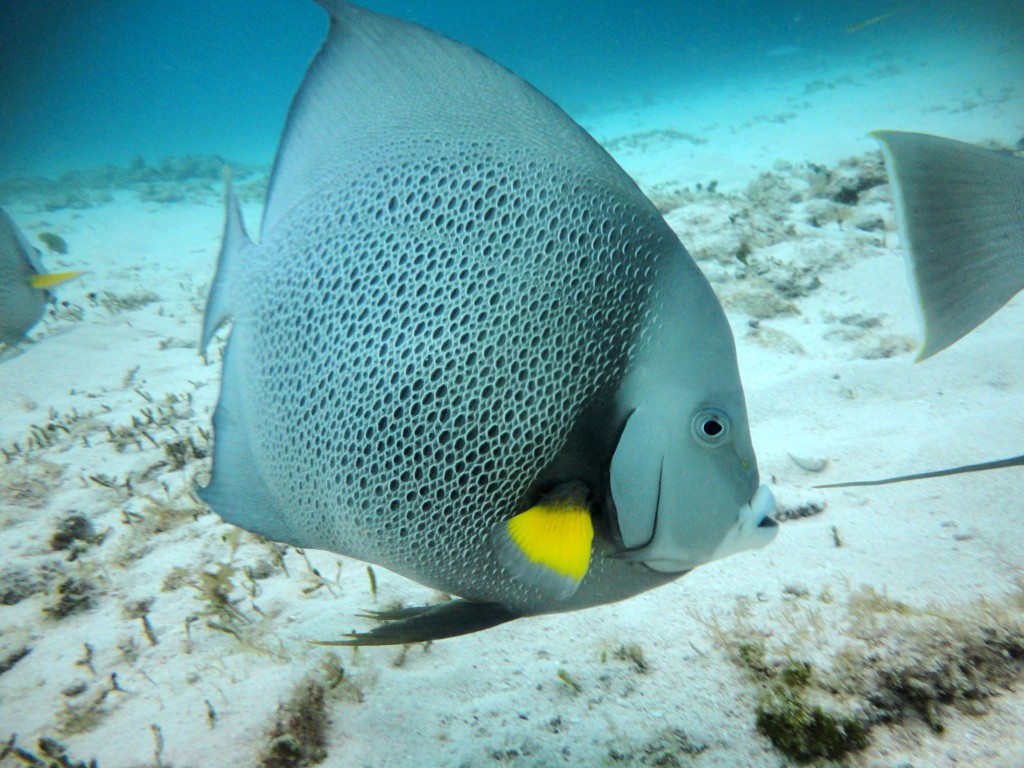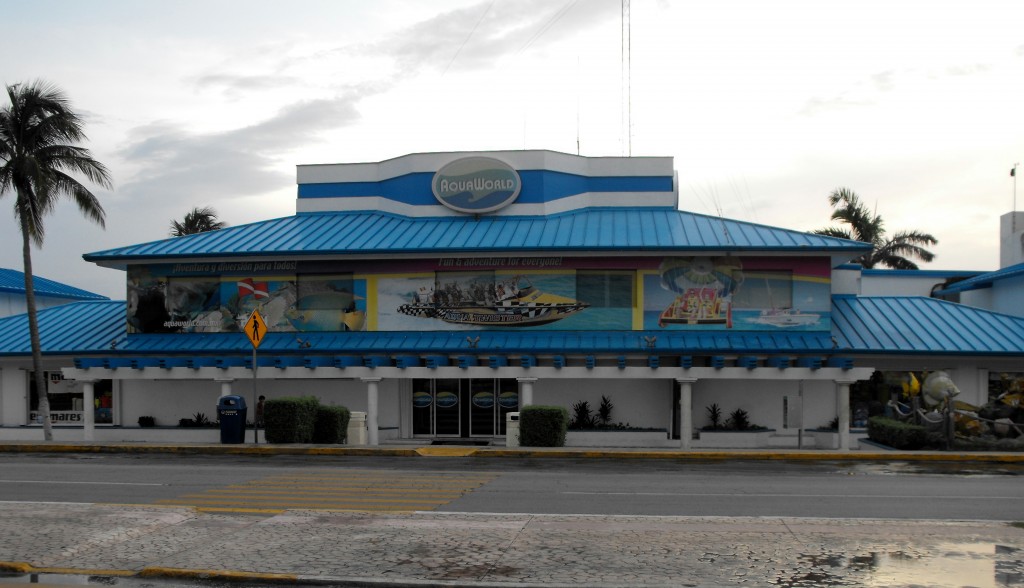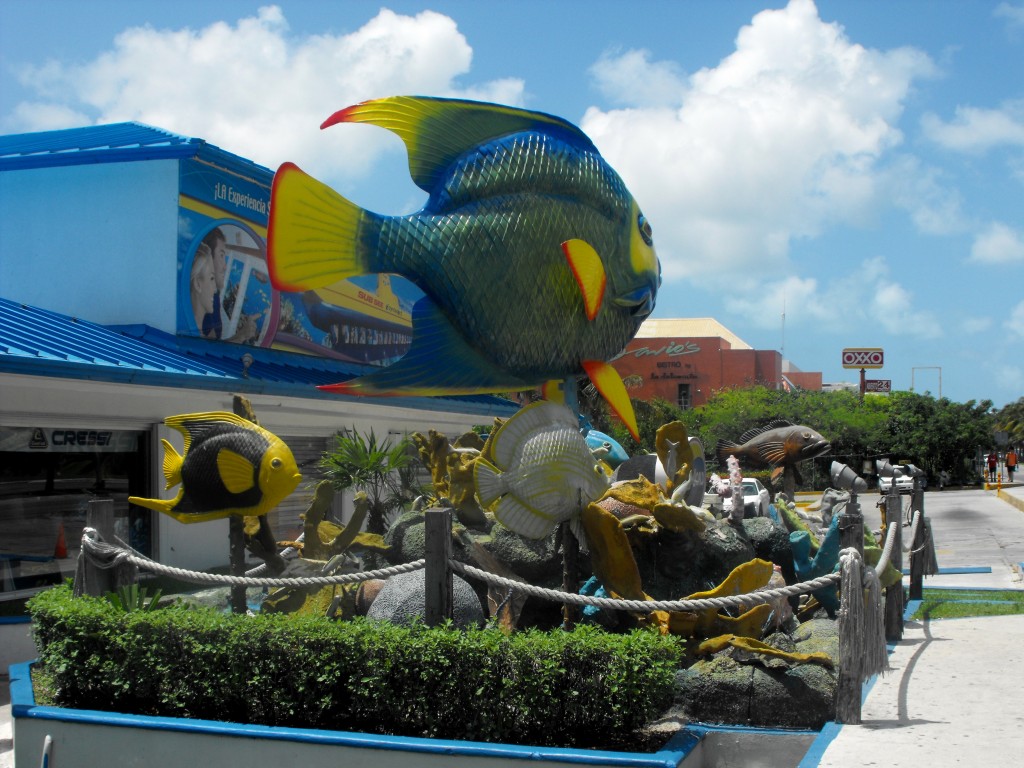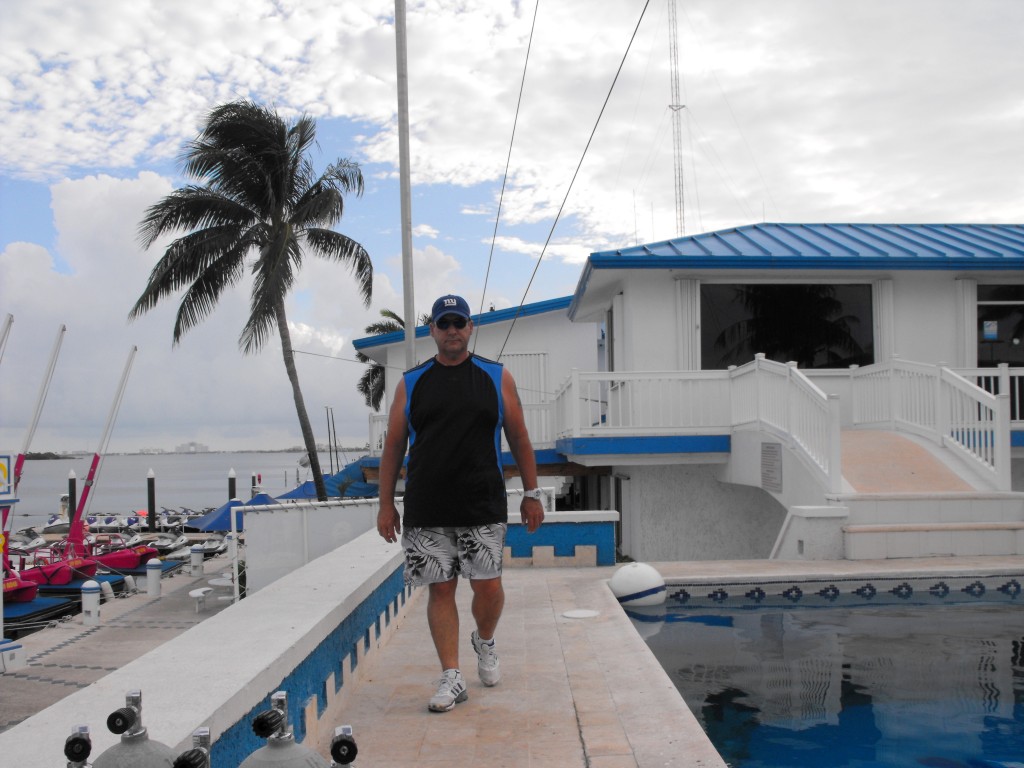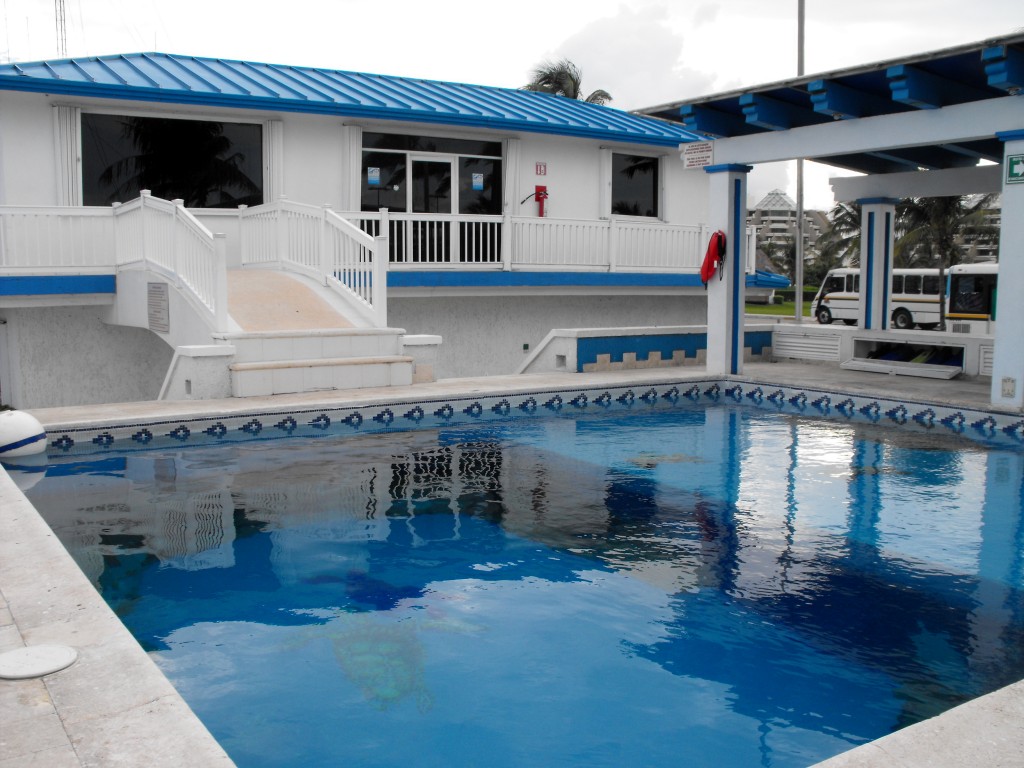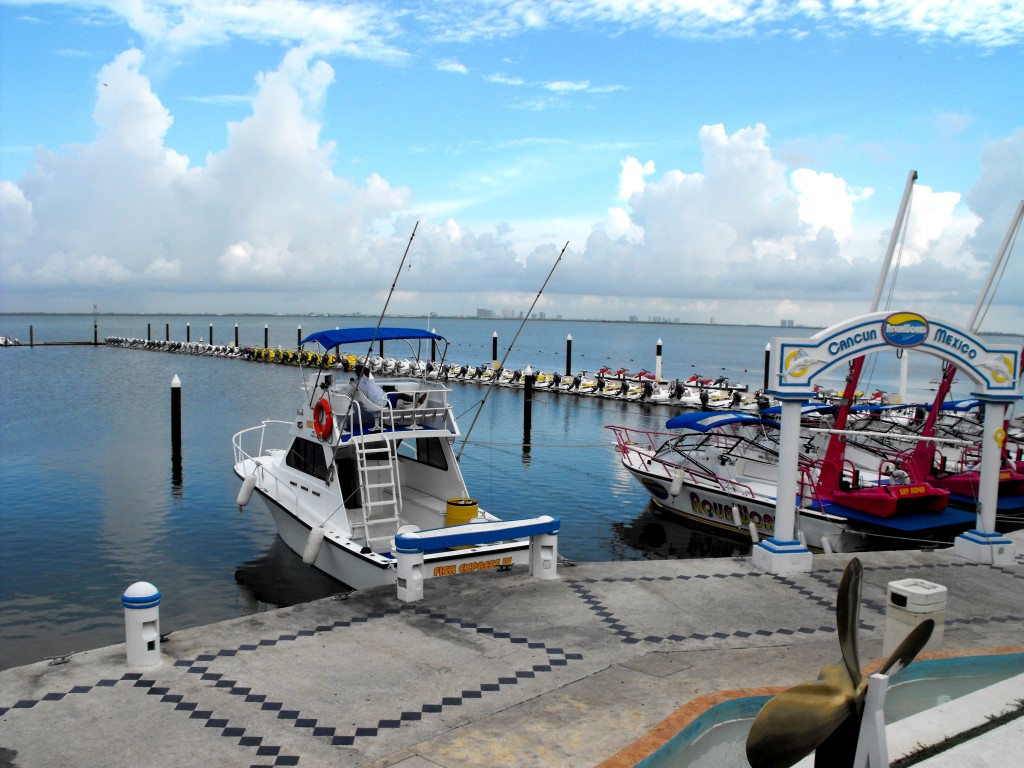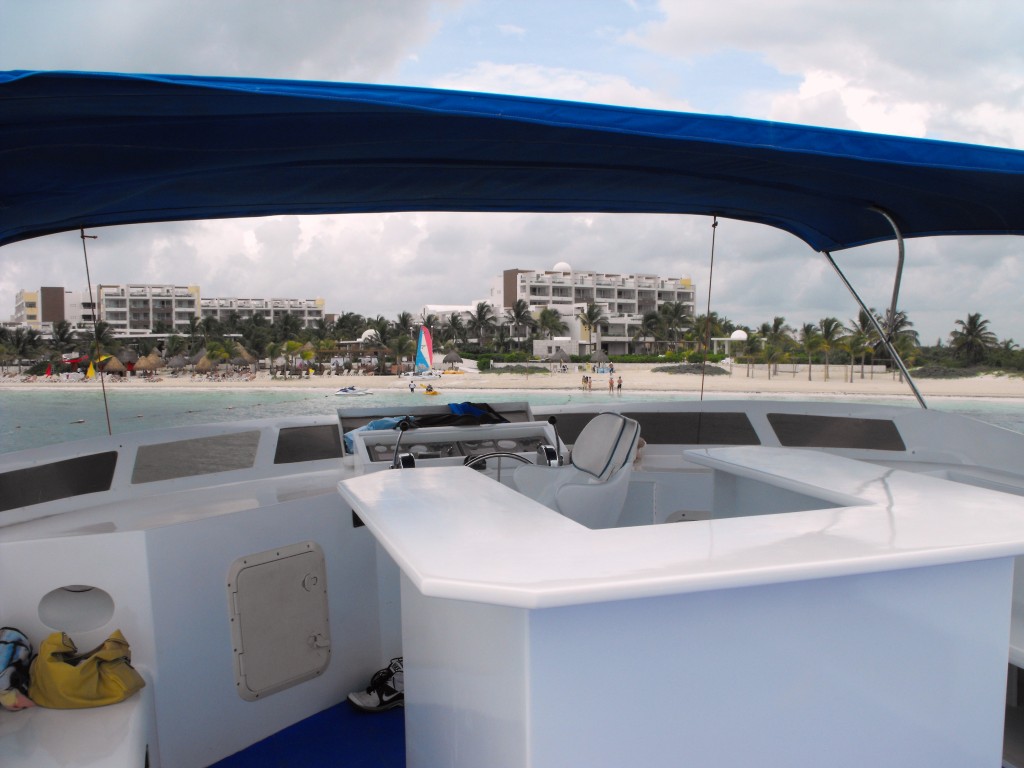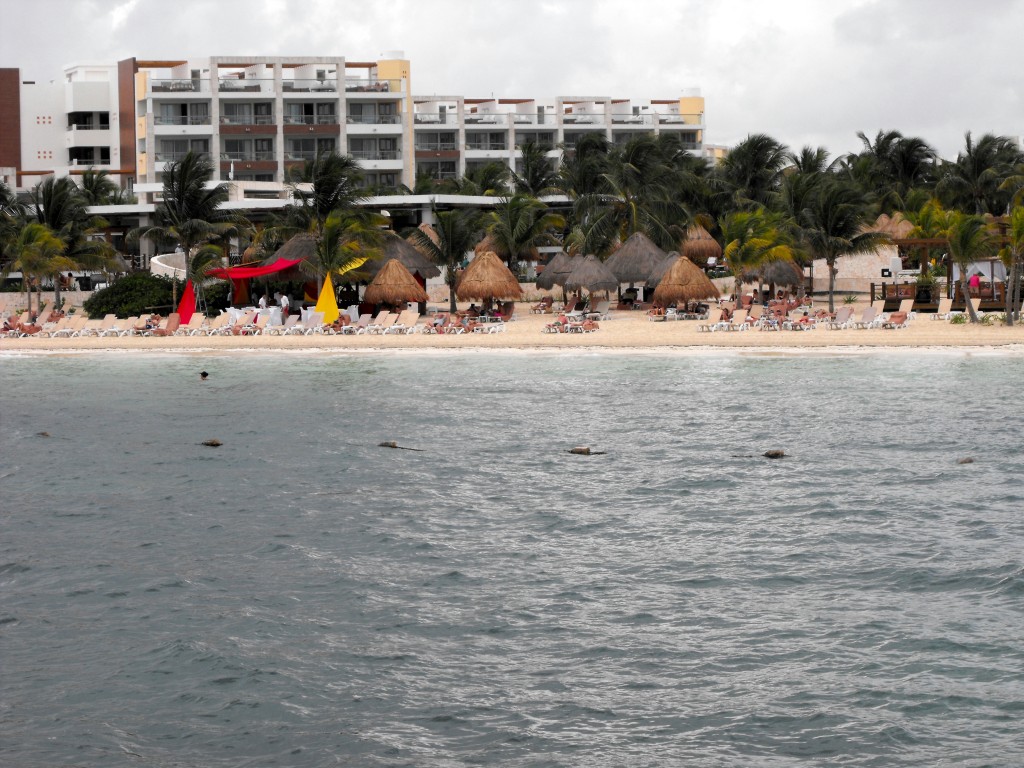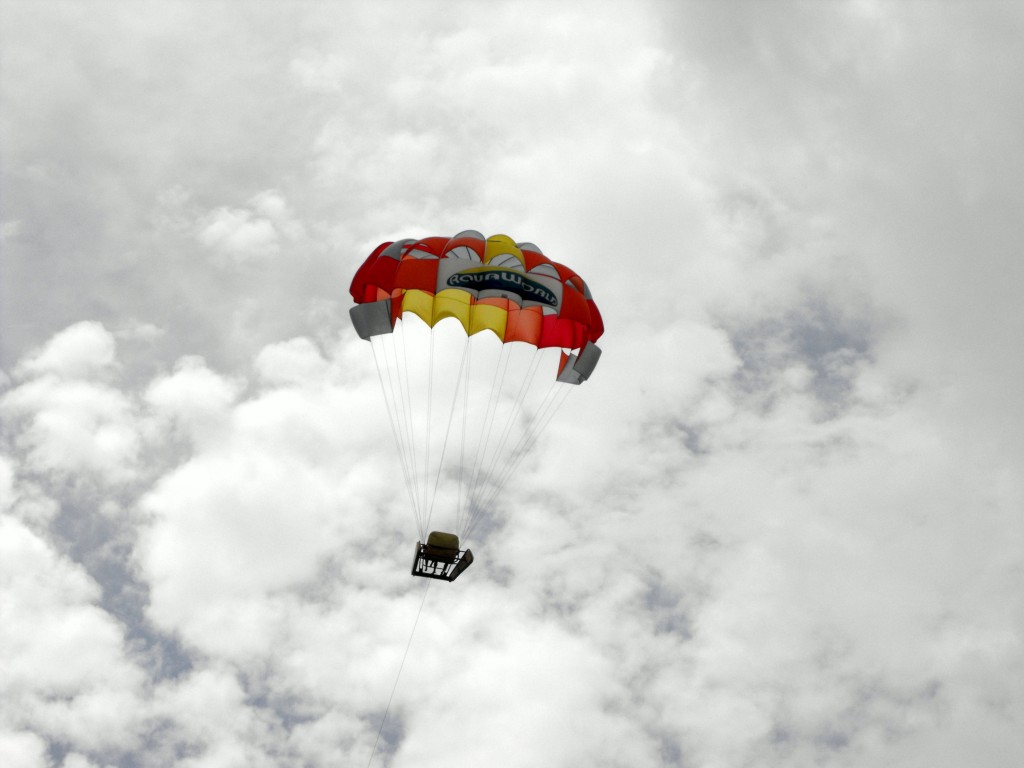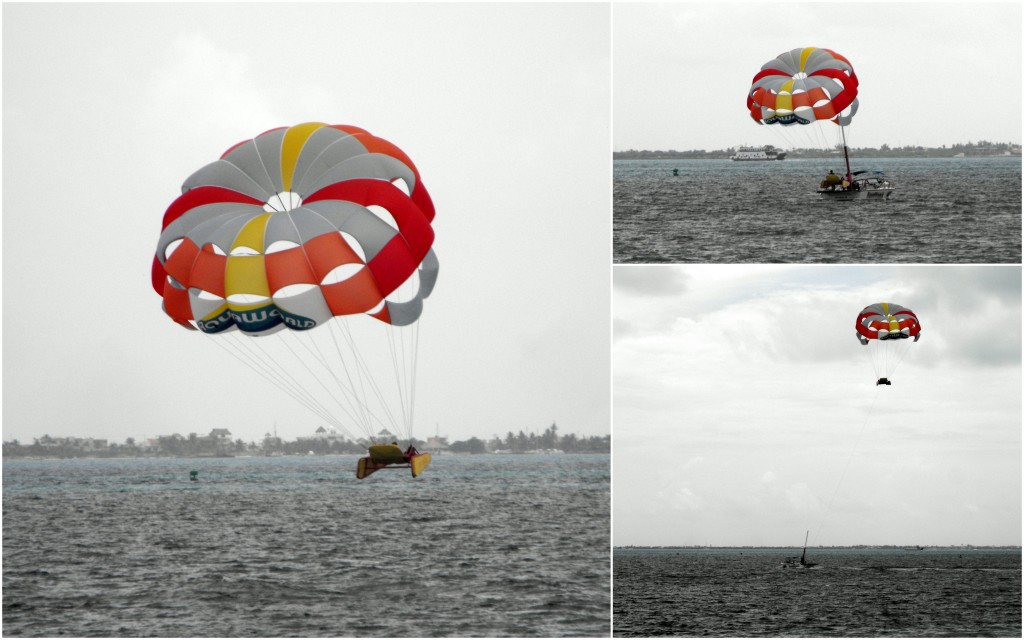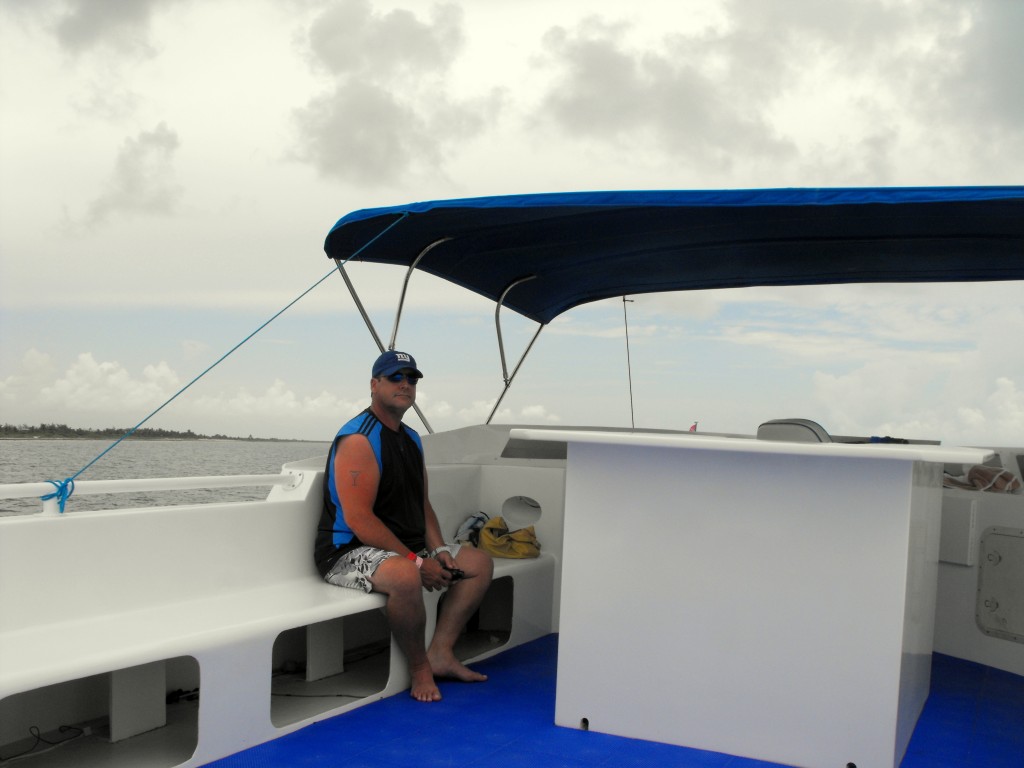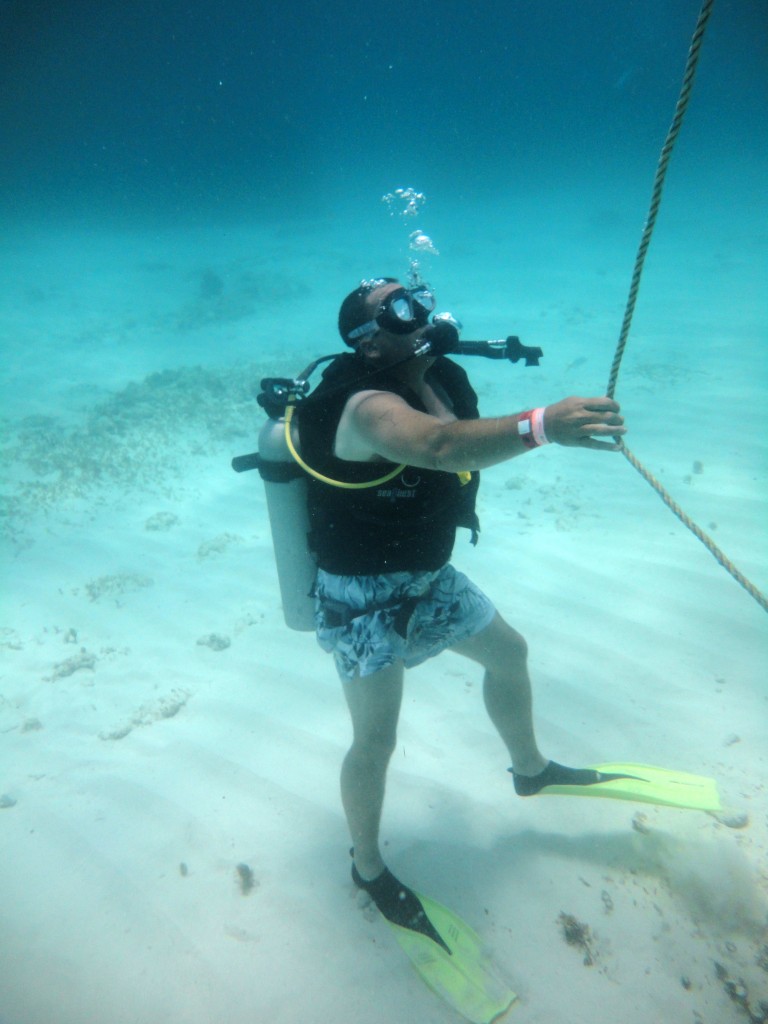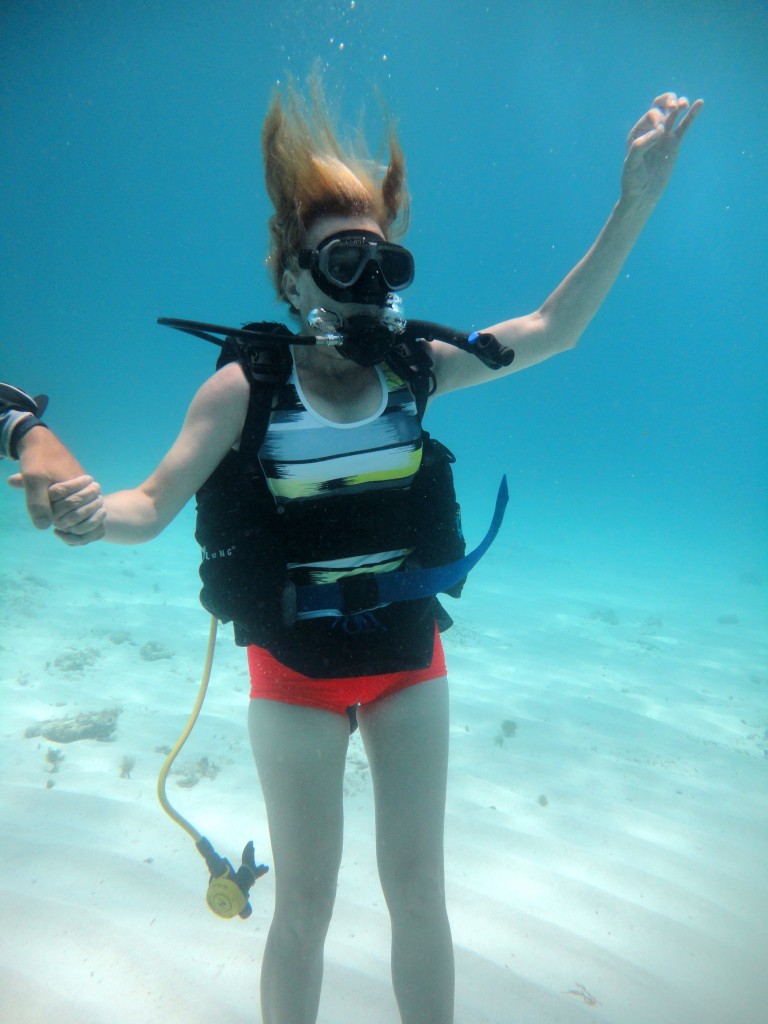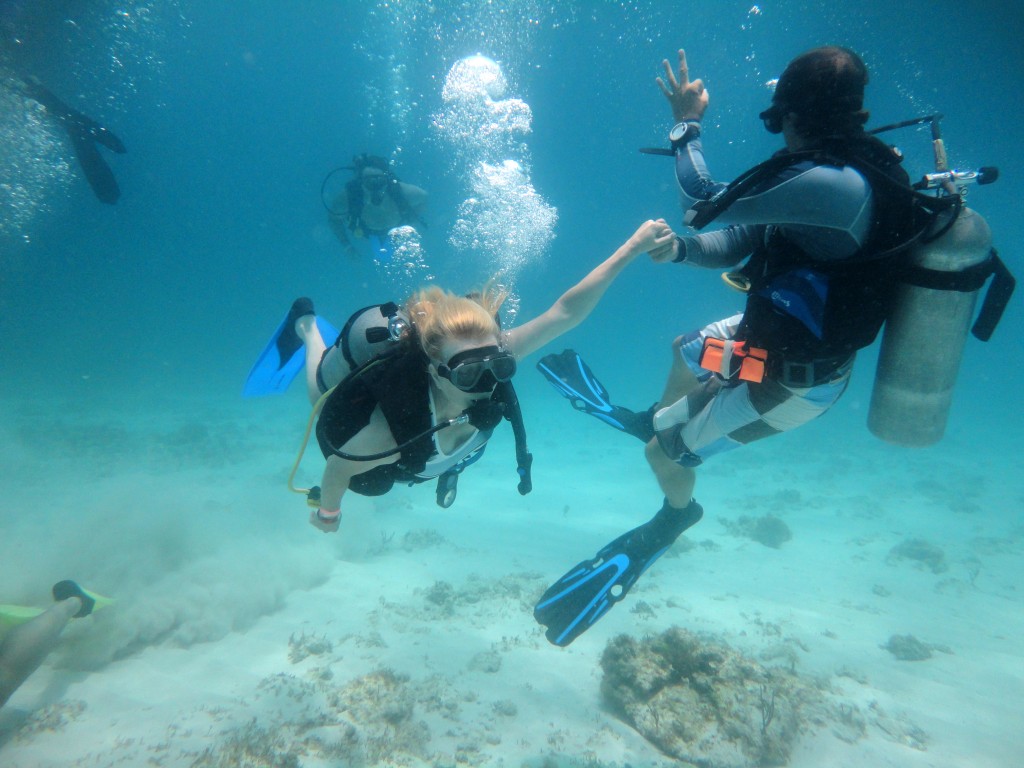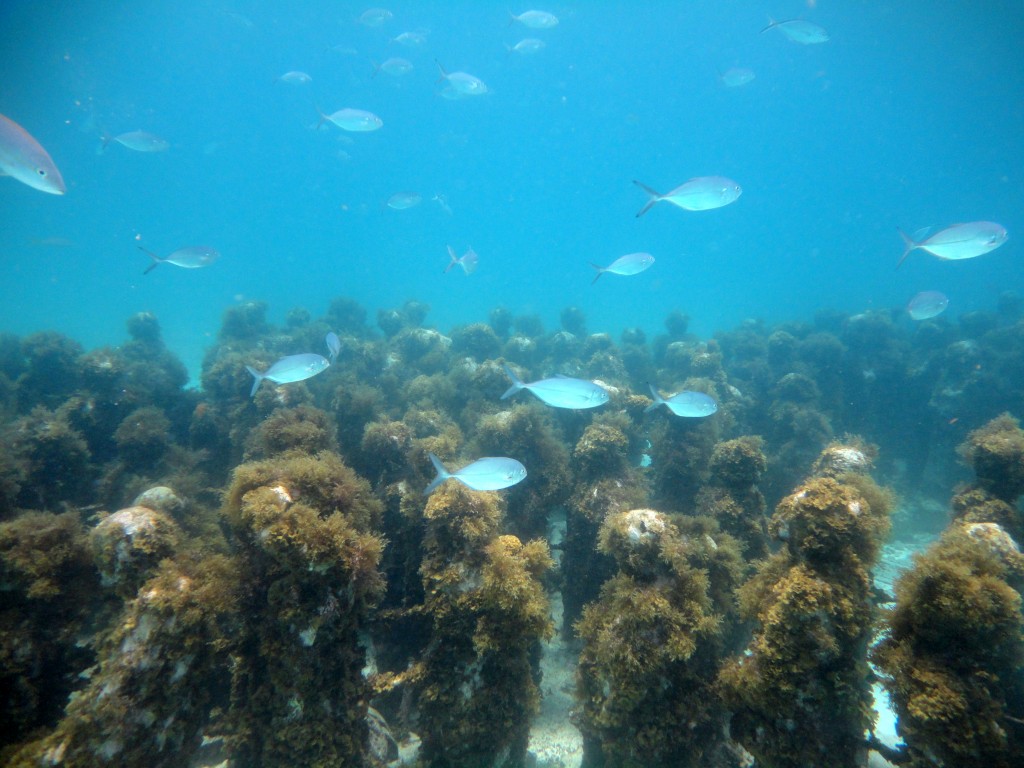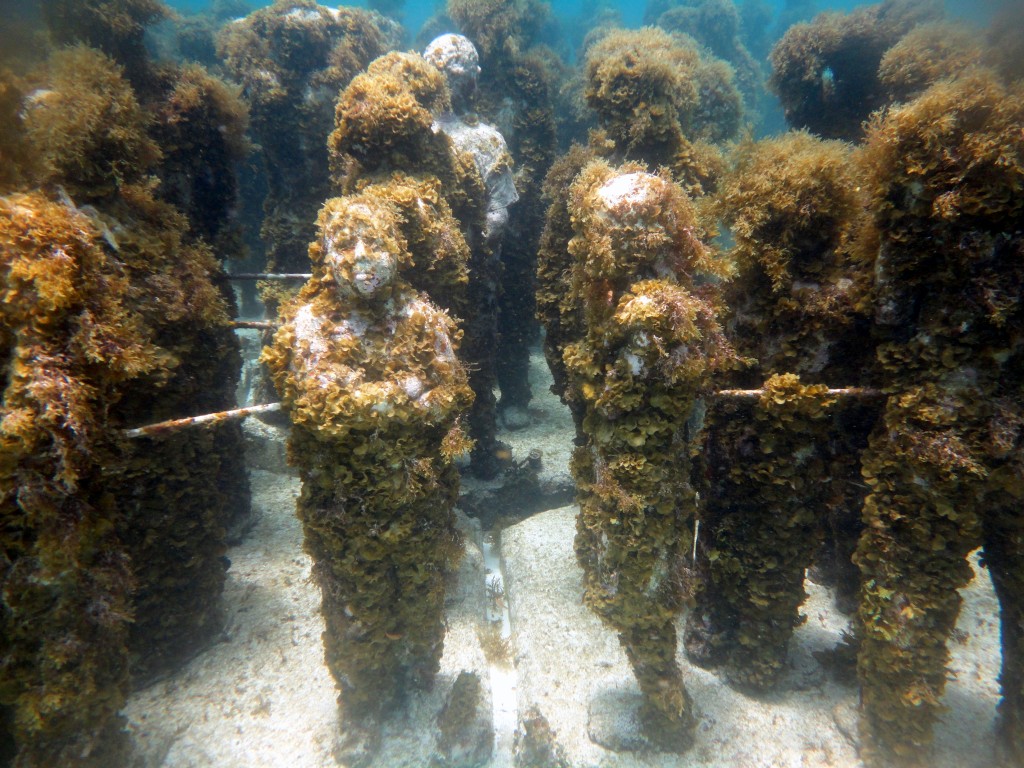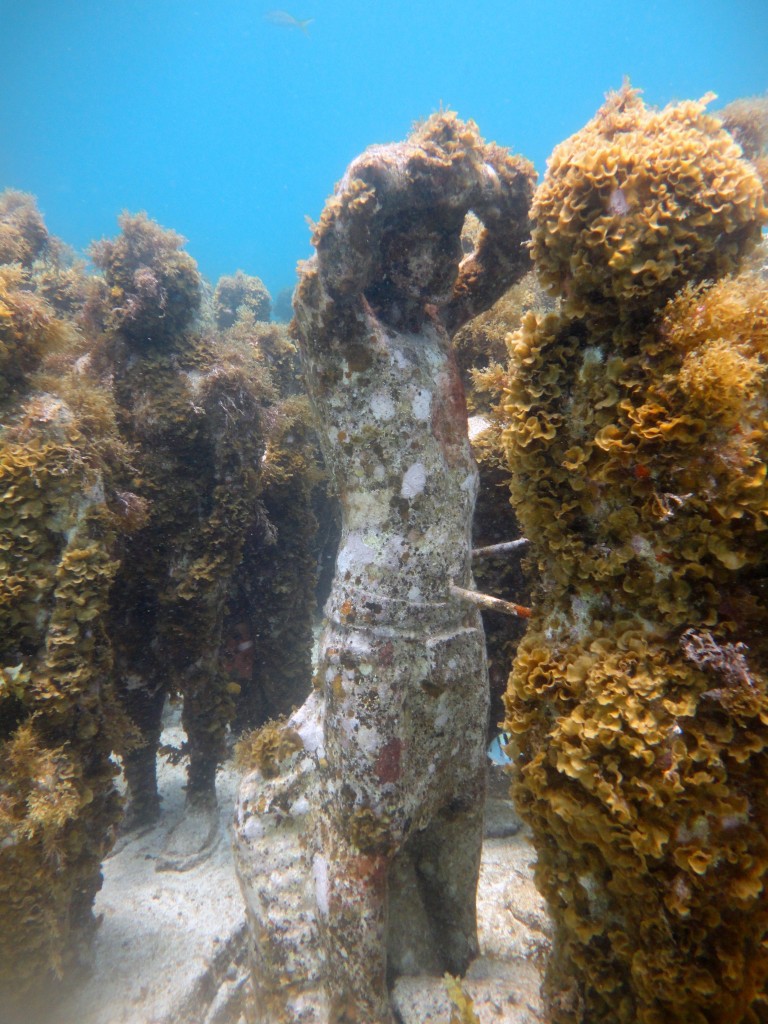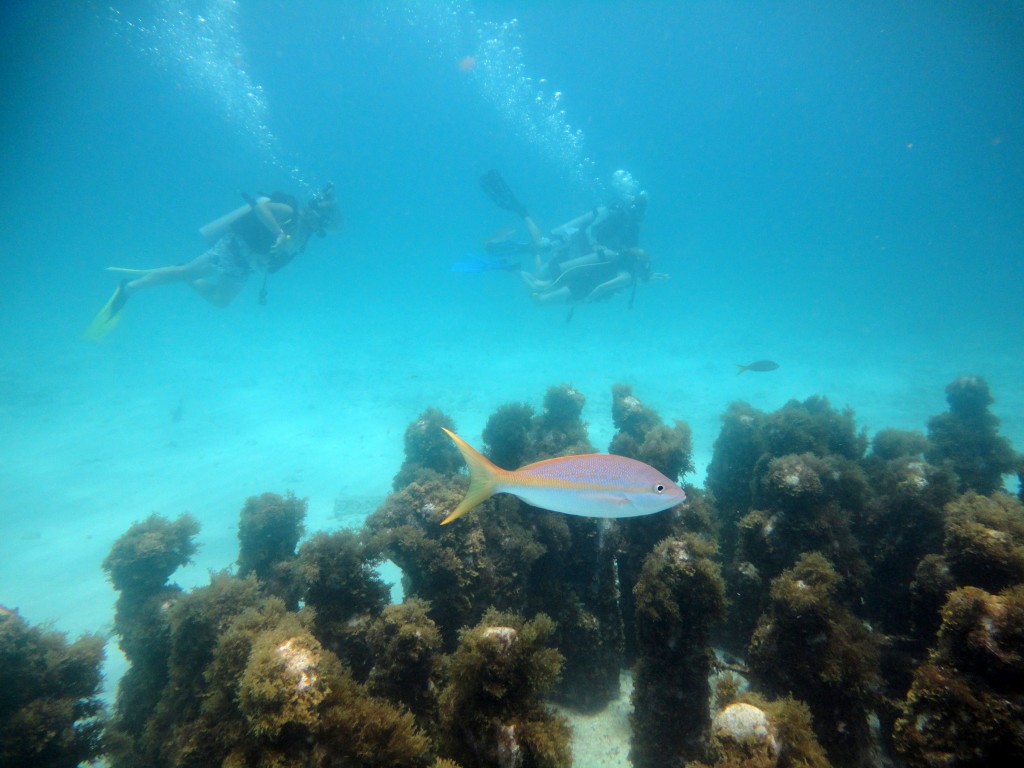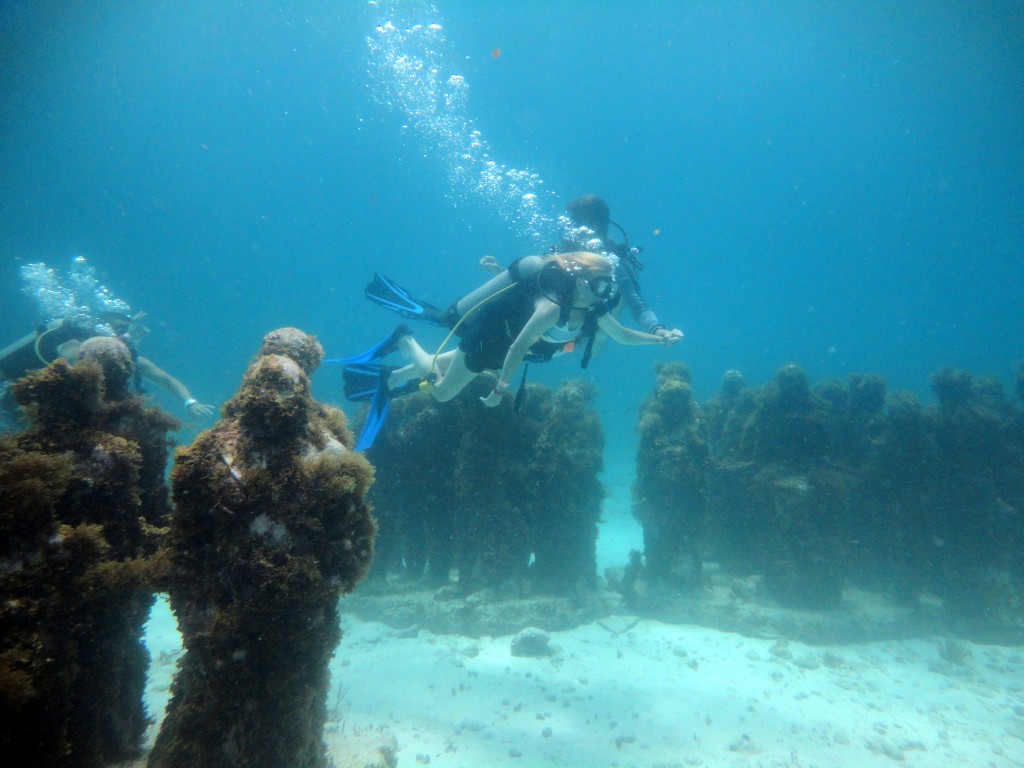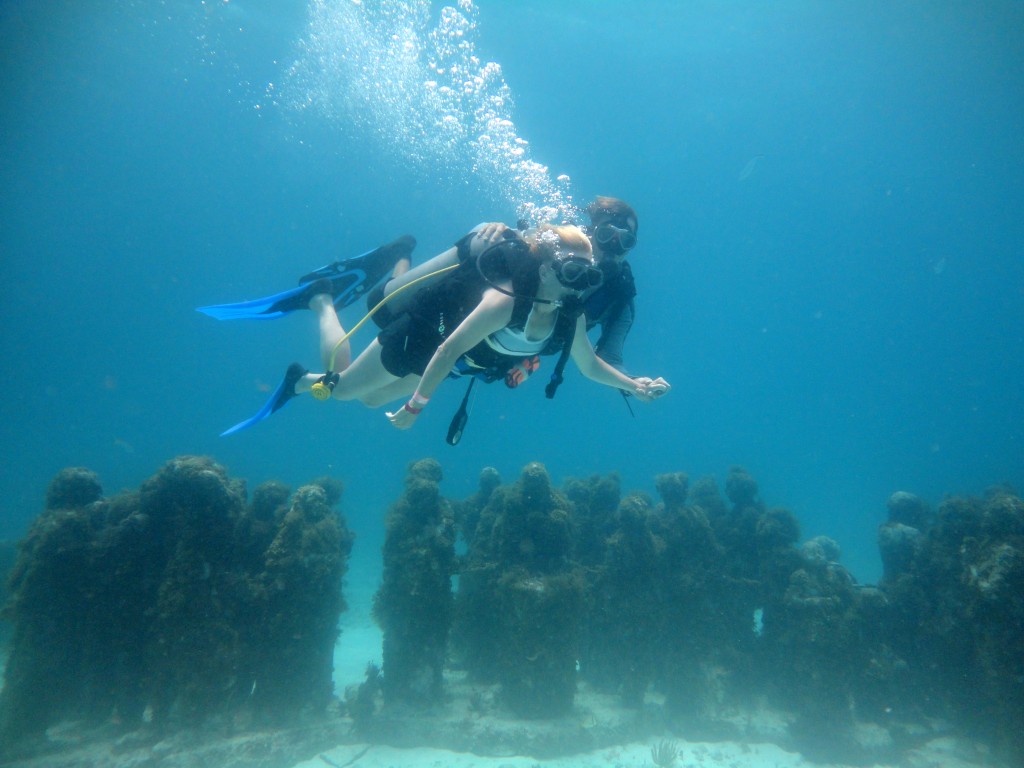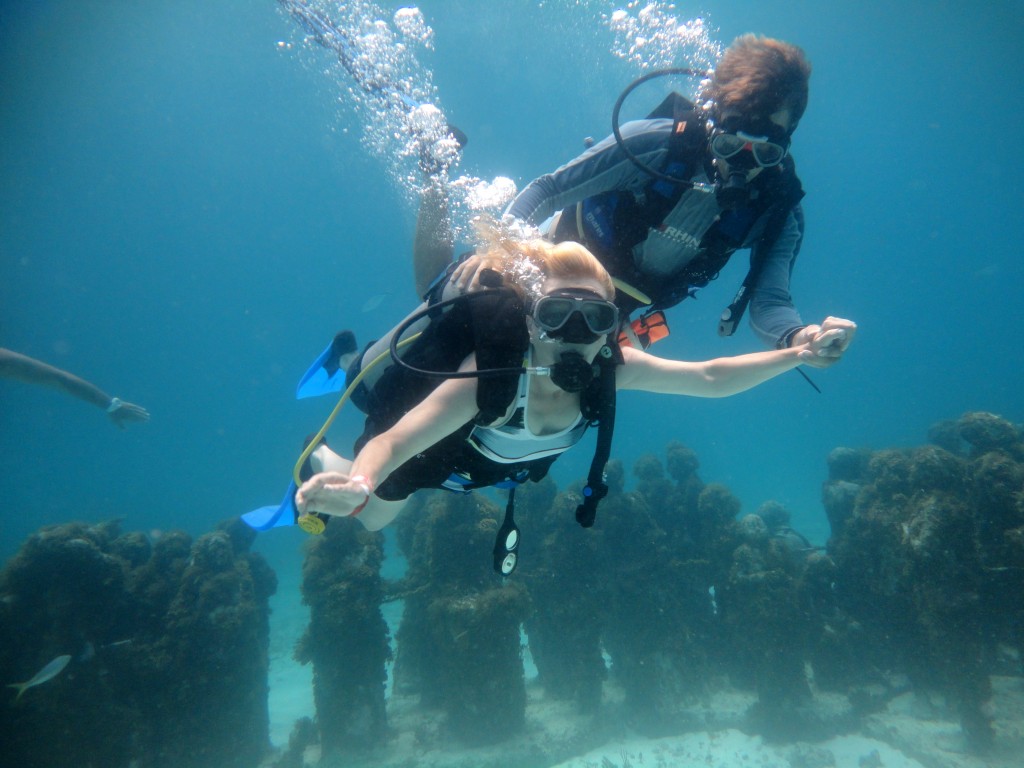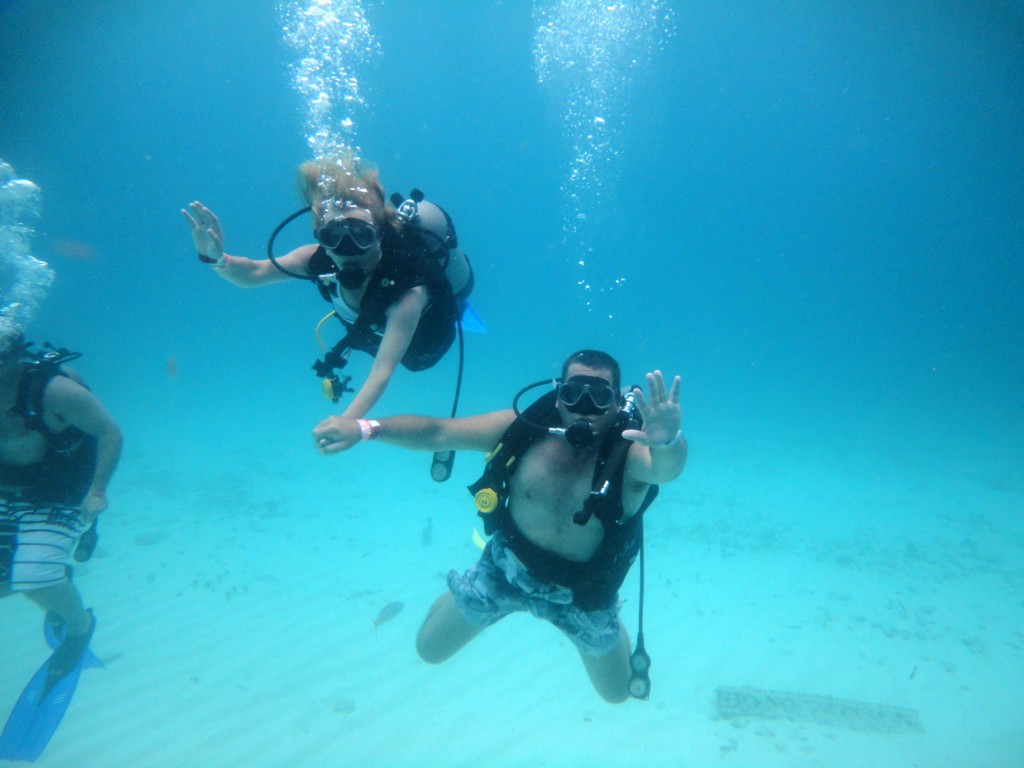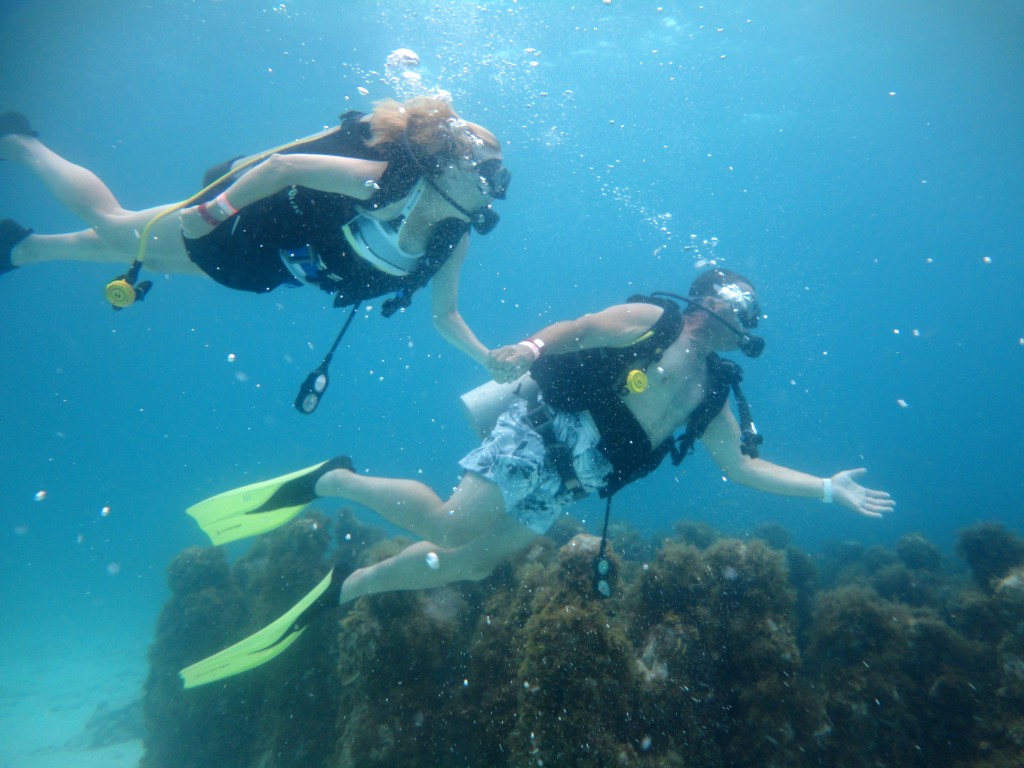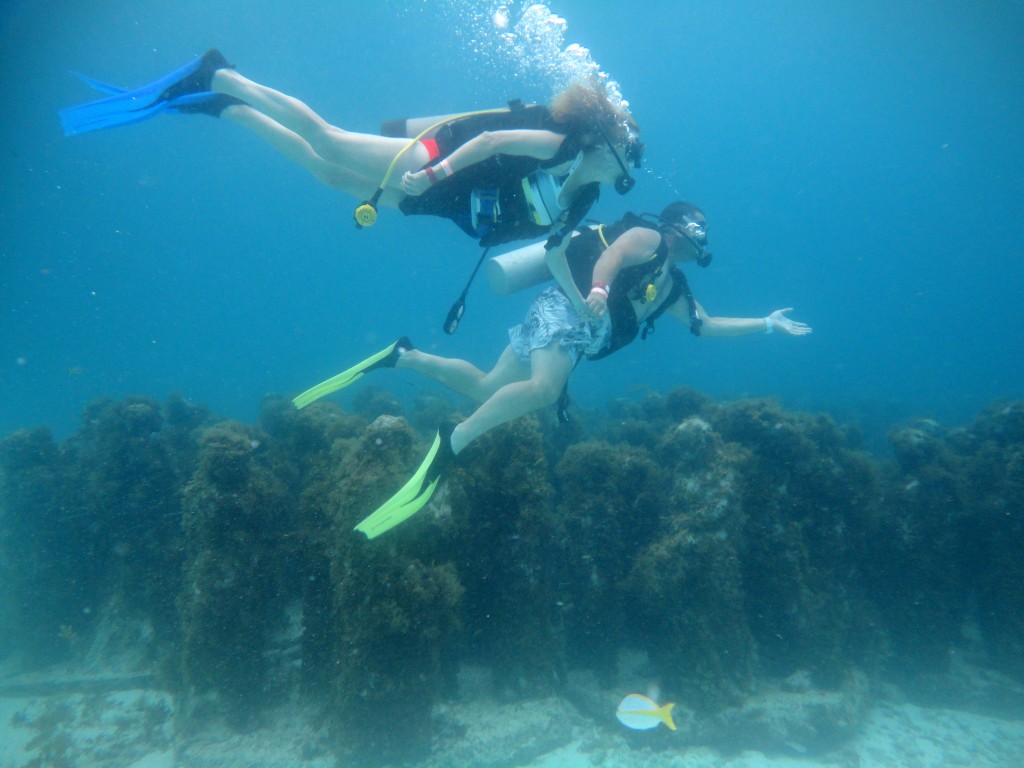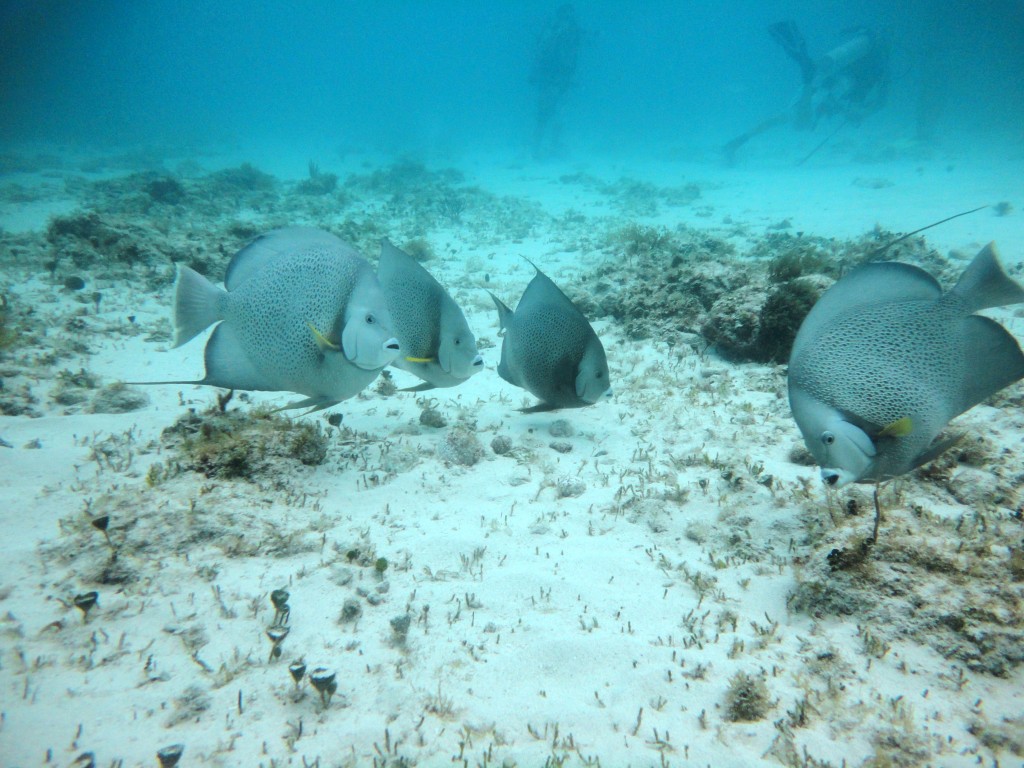Have you ever wondered what it’s like to breathe underwater? Well, this is what scuba diving allows you to do: to breathe underwater, maintain buoyancy, propel yourself through the coral reefs and most importantly stay underwater for a prolonged period of time. On this day, Dave and I were going to visit the MUSA – underwater museum in Cancun at the same time as learning to scuba dive for the first time with AquaWorld. It seems like we chose the right time for a dive in the warm Caribbean waters with great visibility.
AquaWorld – marina and tour center is located right across the street from our hotel.
In the United States it is required to obtain scuba diver training and a certification to experience scuba diving. Here in Mexico, The Discover Scuba or Resort Course is all we needed to go diving right away without a full certification. The class includes a video, a talk by the instructor about the specifics of diving, safety procedures and equipment.
Next, we went to the pool to learn the practical side and try out the scuba gear. We didn’t have any problems in the pool. It did take some practice for me to clear the scuba mask and to remove/put back the diving regulator in my mouth under the water.
The mask clearing skill is one of the most important skills of the open water course. Leaky masks are not fun, but every scuba diver will find water in his mask at some point in his diving career. We will need to be able to efficiently get the water out without surfacing and without panicking. With a little practice, mask clearing and removal of a diving regulator became manageable.
The class was completed in two hours and we were ready for our first scuba dive. Rows of jet skis at AquaWorld looked exciting on the calm Lagoon waters.
This is the boat ready to take us scuba diving in the open sea.
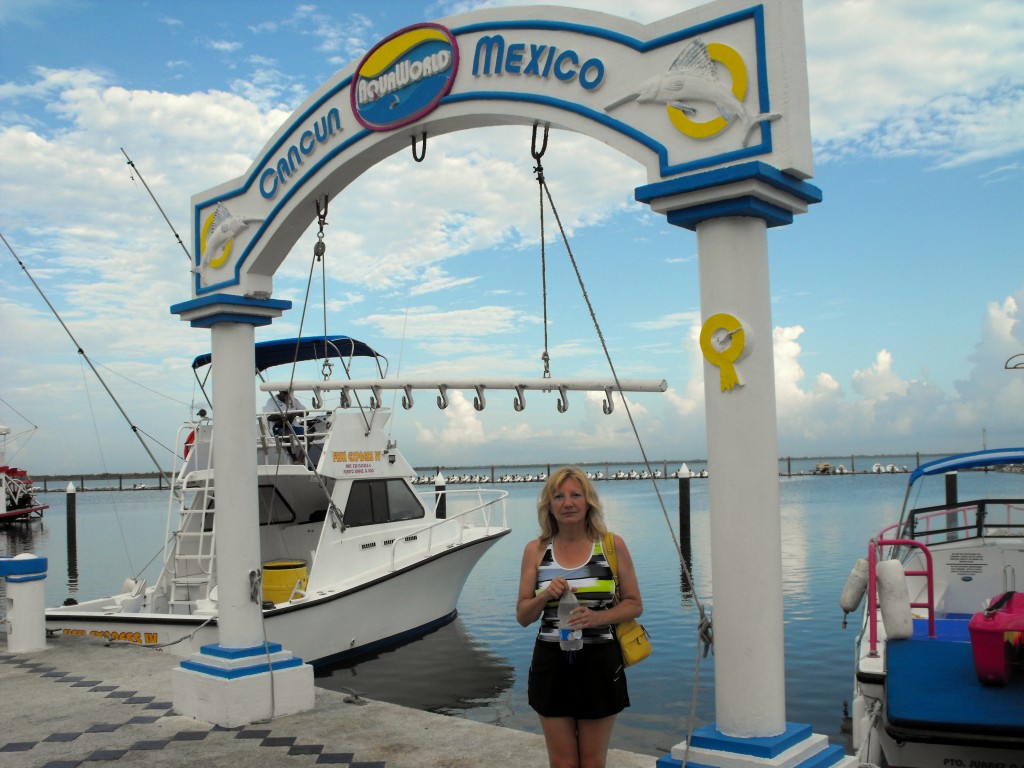
Our boat stopped at a couple more places to pick up other scuba divers.
We had a chance to observe parasailing from the boat. Among other numerous activities, AquaWorld offers parasailing, where the visitors can take a ride on the unique SkyRider. Two people can enjoy the heights of the Cancun Sky in complete safety and comfort.
Then the time has come – our first discovery dive 30-35ft deep. Actually, you can dive up to 40ft/12mts with a Resort Certification. The weather was very nice in Cancun, but when we reached our spot in the open sea, it was windy and rainy there. We put on our scuba equipment and jumped from the boat…
Now I can answer a very important question: “Doesn’t scuba diving hurt your ears?” As we all know, water pressure increases the deeper a diver goes, therefore the pressure in the outer ear increases as a diver descends. Per our scuba instructor, many potential divers have experienced ear pain when diving down in a swimming pool because they did not properly equalize the pressure in their ears. The same refers to diving in the open sea.
I didn’t have any ear problem in the pool, but I experienced a strong pain in my ears during my dive in the open sea. You wouldn’t believe how quickly I got back to the surface. 🙂 The reason for that was, that I didn’t equalize the pressure in my ears properly or not often enough in this case. Second time, I went down slowly with my instructor with proper ear equalization and I didn’t feel any ear pain after that. Dave, in the contrary, got to the bottom among the first without any pain.
A part of our training was learning hand signals as a form of sign system used by scuba divers to communicate when underwater. The first, and one of the most important signals was the “Okay” hand signal. The “Okay” signal is made by joining the thumb and index fingers to form a loop, and extending the third, fourth, and fifth fingers. This signal can be used as both a question and a response. The “Okay” signal is a “demand-response” signal, meaning that if one diver asks another diver if he is okay, he must respond with either an “Okay” signal or the communication that something is wrong.
It felt calm and more comfortable deep under water. It requires a little more effort to breathe under water, but you easily adjust to it. It just feels different at first. Here we are moving towards the Cancun Underground Museum – MUSA.
MUSA – El Museo Subaquàtico de Arte (The Museum of Underwater Art) an underwater art museum inaugurated on 27 November 2010 in the Caribbean Sea off the Eastern state of Quintana Roo, Cancun, Mexico. It is the largest collection of underwater contemporary sculpture worldwide, with the main gallery consisting of over 400 life sized cement sculptures, created by British sculptor Jason deCaires Taylor. This collection is named “The Silent Evolution”. The figures were molded from real models. These models were regular characters from Cancun and Puerto Morelos (from MUSA website).
The museum is located a short distance from the famous Manchones reef. As the museum grows and marine life forms, the aim is to give Cancun’s reef areas a much needed rest so they can recuperate from hurricane damage. The Cancun Marine Park is one of the most visited stretches of water in the world with over 750,000 visitors each year, placing immense pressure on its resources. The location of the sculptures made from ph neutral clay, will promote the recovery of the natural reefs, relieving pressure on them by drawing visitors away.
When I had checked out the MUSA site for the museum ahead of time, I watched the videos and saw the pictures there from the time when the museum was originally placed. The sculptures had easily visible, expressive faces with a very little or no coral cover. So the success of this reef is apparent. So much life and new growth.
Here are more pictures of us in the underwater museum. All underwater pictures are taken by AquaWorld photographer.
The Grey Angelfish seems to be the most abandoned of all the fish we saw there.
It was our first scuba diving experience and it was unforgettable!!!
